More than a million people fled Ireland in the wake of the Great Hunger in the 1840s, but few had to abandon an area as beautiful as the fairy tale estate Henry Ford’s ancestors left behind.
Of course, the lowly Ford family didn’t own the idyllic paradise known as the Lisselan Estate, near Clonakilty in Co Cork, they were merely tenant farmers…but what a place to live and work. Or at least it was until the potato blight devastated the land, causing widespread starvation.
Until then, Henry’s grandparents, John and Thomasine Ford had lived relatively comfortable lives, as tenant farmers at Ballinascarthy, which was part of the estate, which has now become a tourist attraction. The family had lived there since the early 1700s.
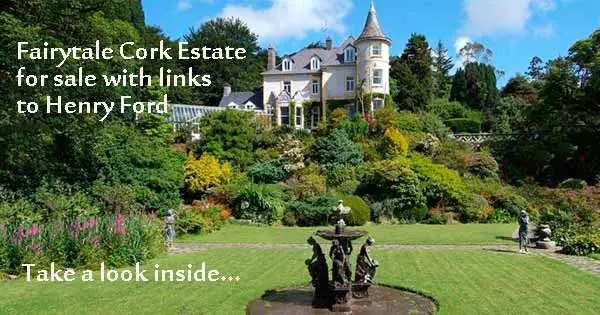
Unfortunately, for them, William Bence Jones, an English farmer, inherited the estate form this grandfather and moved to Ireland.
At first he seemed enlightened and tried to improve the lives of the struggling Irish, introducing new methods and teaching his tenants how to farm turnips more efficiently and renovating many of the roads in the area.
However, as the potato blight began to affect profits, he demanded higher rents for living and working on the estate. He refused to lower the rent, despite pressure from the Land League, and it resulted with many of his tenants being forced to leave, including the Ford family.
In 1847, at the height of the famine, John and Thomasine took the heart-breaking decision to leave Lisselan and move to America with their son William, who was 21 at the time. It was William’s son Henry who set up his own his own company, Ford Automobiles, and ensure that the family name would be forever associated with car manufacture.
The Henry Ford Ancestral Site, incorporating their original farm cottage, is located on Lisselan Estate. There are several vintage Ford cars on display for tourists and holidaymakers.
So, it seems that Ireland’s loss was America’s gain. Had Bence Jones not been so harsh and reduced the rent on his land, then the Ford family may have remained at Lisselan and history would be very different.
Ironically, the stunning Lisselan House estate would have been exactly the kind of property that the millionaire Henry Ford would’ve might have bought for himself.
It was on the market in 2018 and was bought by local businesswoman, Colette Twomey of Clonakilty Blackpudding, for about €3m.
The property for sale details at the time described it as a “spectacular sporting and agricultural estate with a fairy-tale house surrounded by the most wonderful array of gardens; enjoying the riverside setting; its own golf course together with quality agricultural lands”.
It continues: “Bence Jones is said to have marked out the foundations of the house with the help of his three daughters. He went on to create the magnificent riverside gardens on both sides of the river and today these spectacular Edwardian gardens stretch over 30 acres and have been progressively developed since their origin.
“Terrace gardens now drop down from the house lawns leading to flagstone pathways and tree lined walkways which weave through gardens of mature shrubs, tall trees, ferns, a rose covered pergola, over wooden bridges traversing the river and eventually to the walled garden.
“The walled gardens grow loganberries, strawberries, raspberries and gooseberries. Vegetables are also harvested; potatoes, cabbage, lettuce, onions, peas and beans. Herbs such as parsley, thyme and sage are grown. There is an orchard on the slopes of the walled garden that produces apples and pears.”
“The house was designed by Lewis Vuliamy and in the late 1800s the smoke room wing was added, to the design of Sir Thomas Newenham Deane who also designed the lodge at the front gate.
“The conservatory was also added during the Bence Jones times. It was built for the Cork Exhibition of 1902 in which Lisselan’s setting was a major attraction. The fabulous double-height glass and ironwork conservatory was refurbished in 1992 and has since fallen into some disrepair.
“The accommodation is laid out over 4 levels, with the main reception rooms all found on the ground floor, the principal bedrooms over the first and second floor and at lower ground floor there is excellent accommodation including the snooker room (former kitchen) and staff accommodation.
“The well-proportioned elegant reception rooms, along with the characterful tower, have all retained their many period features. These include excellent ceiling heights, ornate cornicing and ceiling roses, open fireplaces, original wooden flooring and sash windows. The rooms are all bright and airy with views to the gardens below and the drawing room and dining both open to a large terrace which is ideal to enjoy the most spectacular surrounding landscape.”
Watch this stunning video to get a true feel of the area.
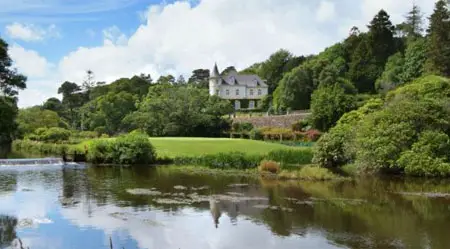
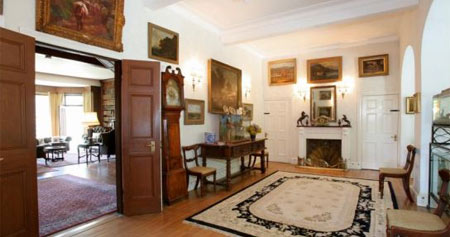
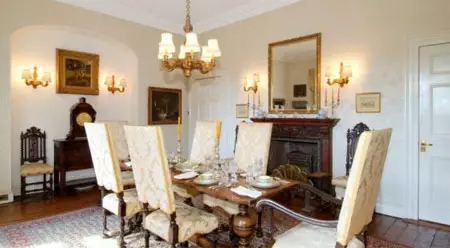
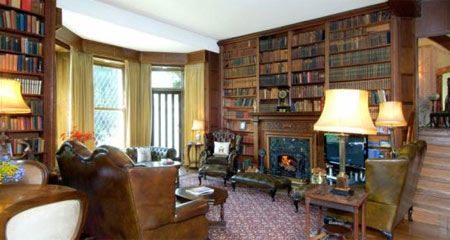

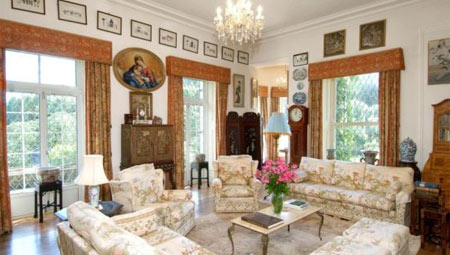
More popular articles and videos
The real life mystery of what Maureen O’Hara whispered to make John Wayne look so shocked
Matt Damon winning hearts and minds with charm assault on Ireland
Action hero Tom Cruise was once attacked by an old man in a Kerry pub
Liam Neeson speaks about his late wife in emotional interview
Dating site explains why Irish men make wonderful husband material
Billy Connolly says public should ignore politicians and listen to comedians
Take a look inside Hollywood star Saoirse Ronan’s stunning Irish home
Ireland Calling Videos
Check out the Ireland Calling YouTube Channel for more great videos like these.